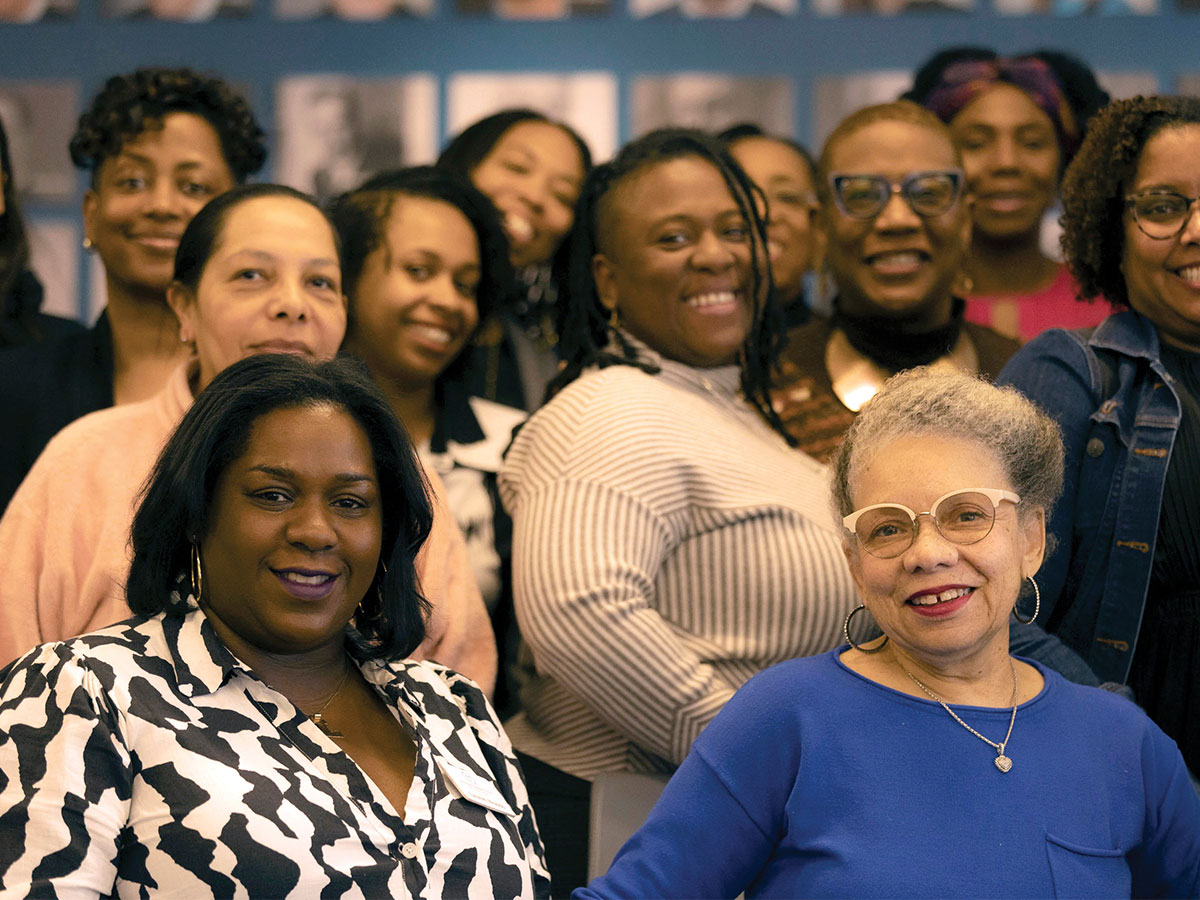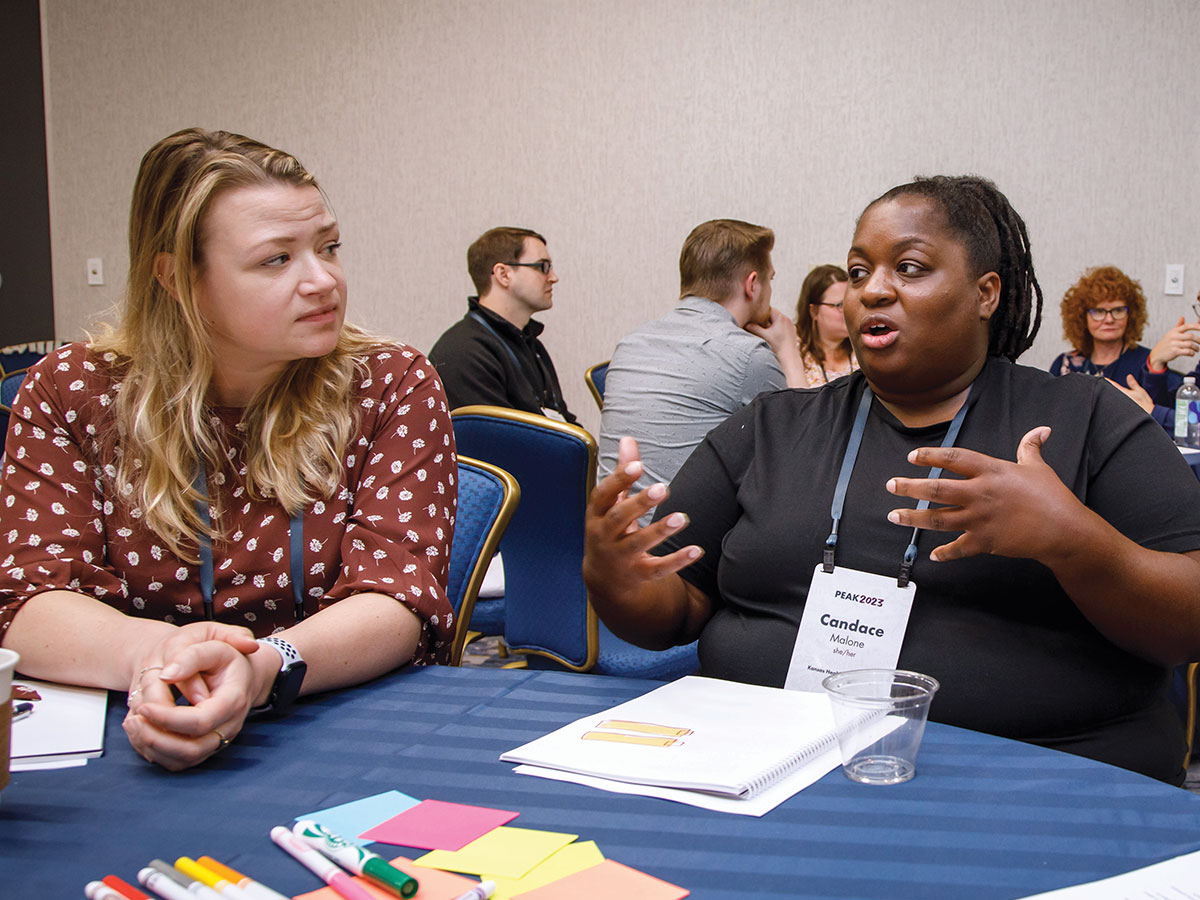Making the Case for Grantmaking Practices that Drive Equity

In 2017, 715 new grantmakers joined our network and, in 2018, we once again hosted the largest annual gathering of grants management professionals. Altogether, PEAK Grantmaking reaches 3,500 grantmakers with our messages, tools, and resources focused on how grantmaking practices contribute to philanthropic impact.
That’s not all: through 14 regional chapters, we reach across the country, sharing expertise and collegiality. Our relationships and partnerships with colleague regional and national organizations extends our reach further while highlighting the essential role of grants management professionals in achieving philanthropic impact.
To all this, you might say, “Wow, that’s great!” But, you might also ask, “So what?”
In fact, that’s a question we’ve asked ourselves. Don’t get me wrong: connecting grantmaking professionals, building competencies, and sharing best practices are important and integral to PEAK Grantmaking’s mission. We do it well and will continue to do so.
Nevertheless, as PEAK Grantmaking’s reach has expanded, our members have asked: “How are we using this influence to advance our field?”
Principles for PEAK Grantmaking is the answer. Forged from conversations over the last year with members and other leaders in philanthropy, the principles capture our collective vision of grantmaking practices grounded in effectiveness, impact, and continuous improvement.
Five broad, recognizable principles are fortified by specific position statements, or calls to action, focused on areas of practice where adoption or improvement would make a significant difference for grantmakers and grantseekers. We shared these principles, in draft form, with working groups at our 2018 conference, and have engaged working groups of member-volunteers to delve deeply into each principle to articulate calls to action, associated practices, and the tools and resources available to help grantmakers live each principle within their own unique context.
While each of the principles is important in its own right, one principle is stretching PEAK Grantmaking and its members into new and vital territory. A singular principle focused explicitly and persuasively on equity is both necessary and over-due.
This principle urges grantmakers to implement equitable practices. Eliminating bias and disparities in the externally facing aspects of grantmaking practice and in the resulting grants will require grantmakers to consider every phase of the grantmaking process. From how applicants hear about funding opportunities, to conducting due diligence, to crafting grant agreements and reporting requirements, the practices that many take for granted need thoughtful examination with an equity lens. A few examples include:
- Financial review: Helping funders move away from a “one size fits all” approach to financial review. Standard financial review practices can prevent grassroots organizations and under-resourced nonprofits from ever achieving financial sustainability, while neglecting the communities many foundations most wish to serve.
- Reducing bias in the review process: A vast body of research shows that the hiring process for employees is biased and unfair. Unconscious racism, ageism, and sexism play a big role in whom we hire. We believe these same factors are in play in the proposal review process and that applying some of the same approaches to reducing bias in hiring to proposal review would contribute to more equitable practices. This could include examining the language used in grant guidelines, exploring how technology could standardize the vetting process, and reexamining site visit questions and approaches.
- Risk-Taking Preferences and Tolerance: At the core, racial disparities in philanthropic giving are entrenched by giving that relies too heavily on relationships, referrals, and “trust.” Unpacking these concepts as well as risk tolerance can help grantmakers expand the pool of potential and actual grantees.
Familiar to those of us who’ve participated in discussions of equity and inclusion, these topics are neither new nor radical. What is new, we believe, is PEAK Grantmaking’s focus on implementation of practices that result in inclusion, diversity, expanded opportunity, and increased impact.
Our members will work alongside peers and partners inside and outside philanthropy to identify and support grantmaking practices that drive equity. By engaging grants management professionals in this call to action, we represent grantmakers at the point of contact with applicants, partners, grantees, and other stakeholders. This is how PEAK Grantmaking will leverage its influence—its privilege—to advance equity.
As always, our members lead the way, keeping us grounded in grantmaking practice and accountable to a vision of equity in philanthropy and society. Our colleagues in philanthropy-serving organizations like the National Center for Responsive Philanthropy, the Center for Effective Philanthropy, and Grantmakers for Effective Organizations offer wisdom and partnership as we pursue common goals.
And, finally, we are proud and thrilled to announce a multi-year grant of $325,000 from the Racial Equity in Philanthropy Fund (supported by the Ford Foundation and the W.K. Kellogg Foundation) to support PEAK Grantmaking’s diversity, equity, and inclusion goals, most immediately and prominently through the Principles for PEAK Grantmaking effort. With this support, we will be focusing and striving toward three ambitious goals:
- Goal 1: Equitable practices are adopted by grantmakers.
- Goal 2: Grantmakers’ competency in racial equity, diversity, and inclusion grantmaking practices is prioritized and achieved.
- Goal 3: Grants management hiring practices invite and retain more diverse talent.
As “owners” of the grantmaking process, PEAK Grantmaking’s members are uniquely positioned to tackle issues of implicit and explicit bias in the systems that govern grantmaking. As we alter and adapt the behaviors, attitudes, and the practice of grantmaking, we envision a new landscape for grantseekers, grantees, the social sector itself.


